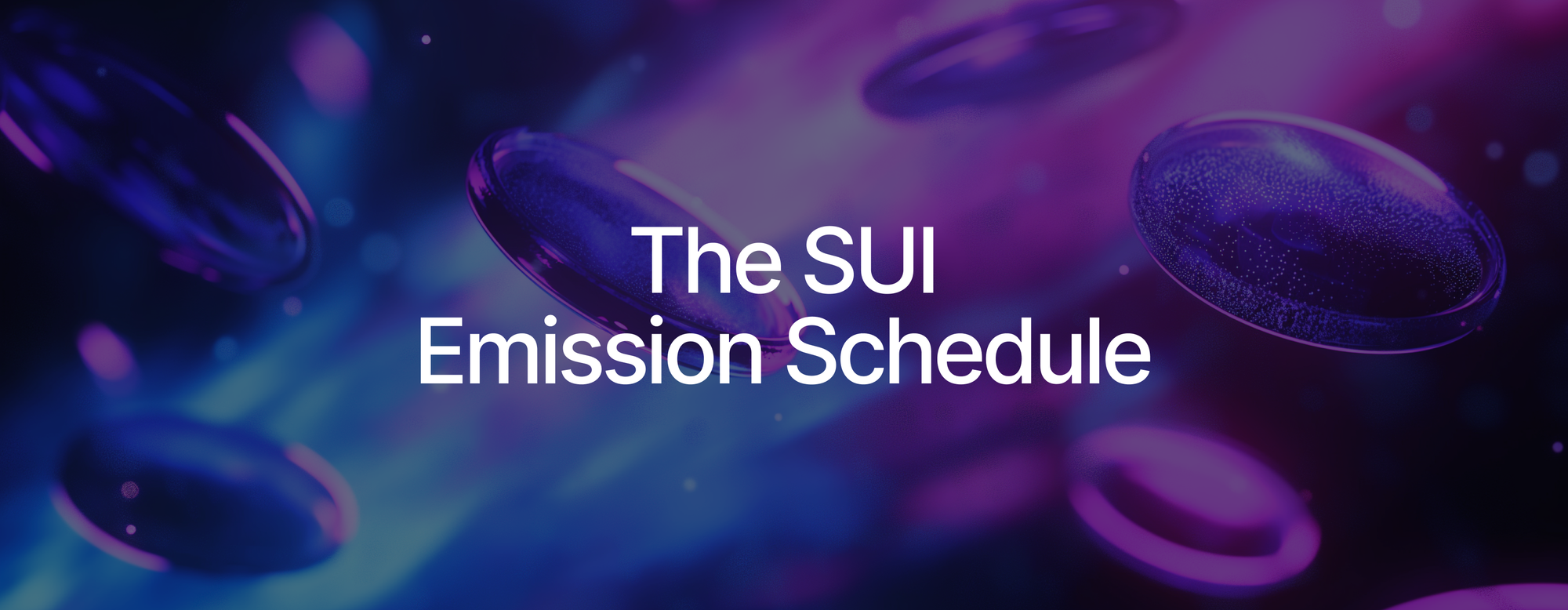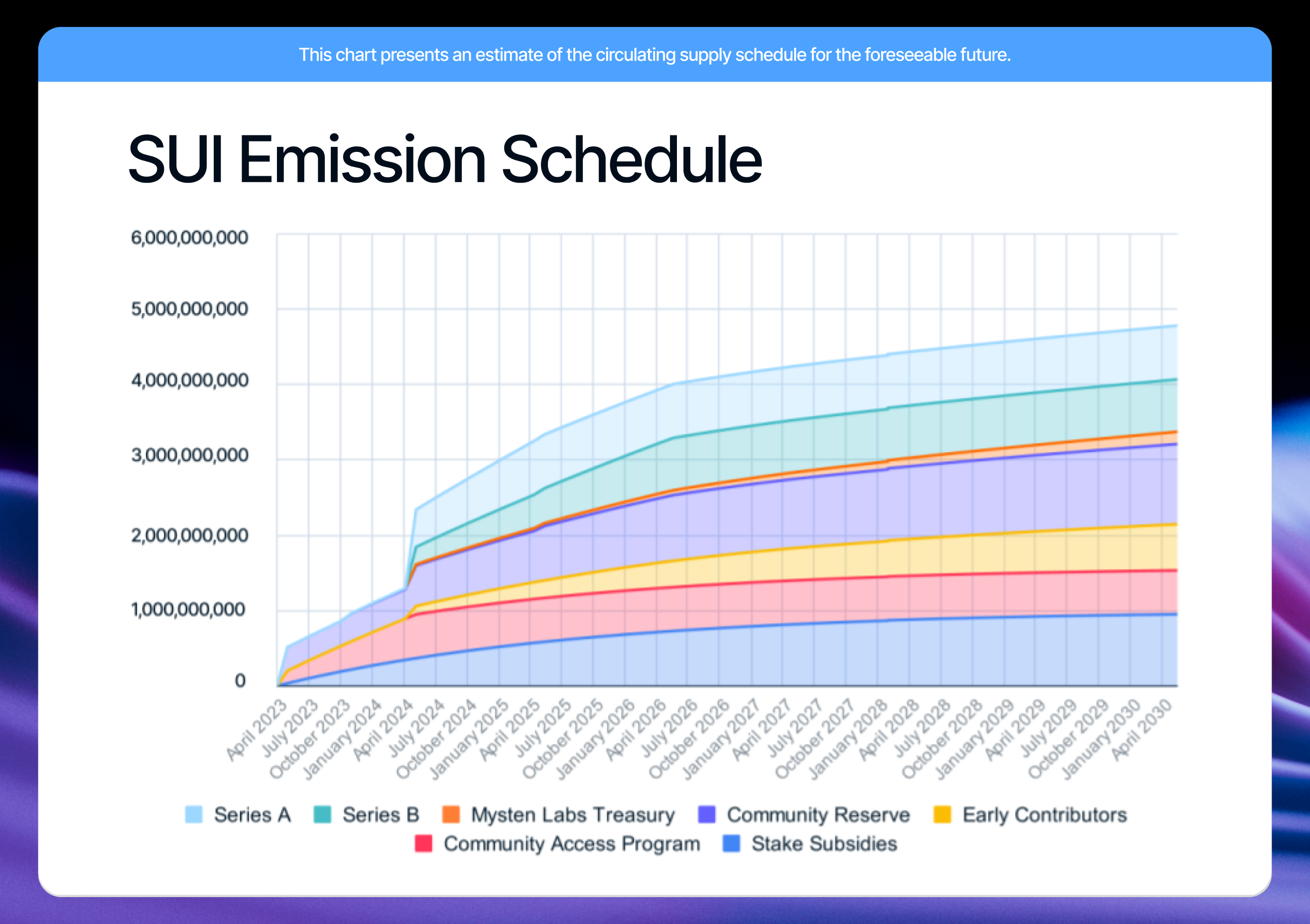Understanding Staking and SUI’s Emission Schedule
The SUI emission schedule defines when new tokens are released, and is unaffected by unstaking, withdrawal, and utilization of stake rewards.

Sui's native asset, the SUI token, has a finite supply of 10 billion tokens. Not all tokens are immediately in circulation. Rather, as the Sui ecosystem grows, new tokens unlock in order to reward early supporters of the ecosystem, stake subsidies support the network’s current operations, and the Sui Foundation distributes the community reserve to Sui builders, developers, and community members to reward their efforts. SUI’s circulating supply is publicly available in this API and can be studied in more detail here.
Importantly, Sui operates with a Proof-of-Stake security model by which SUI token holders stake SUI tokens in order to delegate their voting power to the network’s operators. In exchange, stakers receive stake rewards.
"Stake rewards accrue from two sources, stake subsidies and gas fees, and these tokens are already in circulation by the time they are distributed as stake rewards."
Critically, it is important to underscore that the unstaking, withdrawal, and utilization of stake rewards does not contribute to changes in circulating supply. The reason is simple. Stake rewards accrue from two sources, stake subsidies and gas fees, and these tokens are already in circulation by the time they are distributed as stake rewards.
In particular, stake subsidies are released periodically at the end of each epoch (about every 24 hours) and these releases are incorporated into SUI’s emission schedule. Thus, every time that stake subsidies are paid out towards stakers, there is an increase in circulating supply. However, once a staker receives stake subsidies in the form of stake rewards, these tokens are already in circulation. Hence, if the user decides to unstake their stake rewards to use for other purposes, there is no effect on circulating supply because the tokens are already counted as circulating supply when they arrive in the staker’s wallet.
Similarly, gas fees are paid by users who initiate on-chain transactions. Gas fees are, by definition, tokens that are already in circulation, otherwise the user would not have been able to acquire or use such tokens for the purpose of paying gas fees. As in the case of stake subsidies, when a staker receives gas fees in the form of stake rewards, these tokens are already in circulation.
Overall, because stake rewards are entirely comprised by either stake subsidies or gas fees, and since these tokens are already in circulation by the time they arrive into a staker’s wallet, the withdrawal or use of stake rewards for any purpose does not constitute a change in SUI’s circulating supply. We hope this detailed explanation helps address the non-impact of stake rewards on circulating supply.
Sui Mainnet was launched on May 3, 2023. Since then, the network has released 179 million SUI tokens in the form of stake subsidies and 0.9 million SUI have been collected as gas fees from on-chain transactions. In total, as of the date of publication, the network has paid out 179.9 million SUI in the form of stake rewards to SUI stakers since its inception.

Finally, note that a key item in the emissions schedule is the Community Reserve, which is custodied by the Sui Foundation with the goal of supporting Sui’s community through grants, awards, and ecosystem partnerships through programs that support projects contributing to the strength of the Sui network. The Community Reserve itself earns staking rewards which are then distributed through the grants, awards, and partnership programs. None of these activities change the original token release schedule, because the stake rewards are already in circulation and simply re-channeled towards the Sui community.

